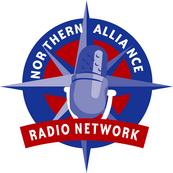Tremors in Iran
Numerous protests have erupted all across Iran in the last week or so. Gateway Pundit has had good coverage (see here and here), and The Spirit of Man blog has good coverage and pictures as well.
Amir Taheri has a must-read column that points out how Iran, far from being a Persian monolith, may be fracturing along ethnic and tribal lines.
One of the most important groups to keep an eye on are the Azeris. They are a signficiant portion of the Iranian population, perhaps as much as 25%. Their ancestral homes in NW Iran are closely linked with neighboring Azerbaijan. Some of the largest protests have been in NW Iran. Read through the links I've posted above. Also, Regime Change Iran links to a report that two Azeri journalists were detained.
In fact, the border between Azerbaijan and Iran was formed in 1828, in the Turkmanchay treaty between Russia and Persia. Tabriz, an Azeri city which has experienced some of the protests, is now in NW Iran.
Azeris are a Turkic people, whereas Persians are an Indo-European people. Ancient tensions run deep.
Taheri writes:
In his excellent book The Ends of the Earth, Robert Kaplan writes the following about Azerbaijan:
A similar clash of past history and the present could be found in other ethnic groups in Iran. The Kurds, the Arabs, the Balochs, etc...
The mullahs are trying to hold tight to their power, but subjugated people in Iran drawing strength from their ethnic identities to stand up to the brutal regime.
There are reasons to believe the Iranian regime can be toppled from within. Will the United States stand up and voice strong support for regime change?
Amir Taheri has a must-read column that points out how Iran, far from being a Persian monolith, may be fracturing along ethnic and tribal lines.
One of the most important groups to keep an eye on are the Azeris. They are a signficiant portion of the Iranian population, perhaps as much as 25%. Their ancestral homes in NW Iran are closely linked with neighboring Azerbaijan. Some of the largest protests have been in NW Iran. Read through the links I've posted above. Also, Regime Change Iran links to a report that two Azeri journalists were detained.
In fact, the border between Azerbaijan and Iran was formed in 1828, in the Turkmanchay treaty between Russia and Persia. Tabriz, an Azeri city which has experienced some of the protests, is now in NW Iran.
Azeris are a Turkic people, whereas Persians are an Indo-European people. Ancient tensions run deep.
Taheri writes:
Last week Tabriz, capital of East Azerbaijan, was the scene of anti-government demonstrations that, despite claims by some exile groups, were largely spontaneous. The trigger for the protests was a cartoon published in a government-owned newspaper depicting Azeris, Iran’s largest ethnic and linguistic minority, as “dumb cockroaches.”
No one knows how many Iranians have Azeri roots. However, official statistics indicate that Azeris form a majority in four provinces: East Azerbaijan, West Azerbaijan, Ardebil and Zanjan. Taking into account Azeris living in other provinces, at times for generations, the community may be 15 million strong.
For centuries, Azeris have played a leadership role and served as the vanguard of such historic events as the 1906 Constitutional Revolution. Their Shiite faith and passionate attachment to Iranian nationhood have made them the backbone of the modern Iranian nation-state.
Azeris also played a crucial role in sweeping the late Ayatollah Khomeini to power in 1979. Immediately after the revolution, however, Khomeini moved to stop the rise of Azeri influence in his newly created Islamic republic.
One such move was to defrock Grand Ayatollah Kazem Shariatmadari, an eminent Azeri theologian and one of the most respected Shiite leaders of the last century. Most Azeris saw the move as a direct attack on themselves. They were also outraged by the fact that Khomeini had forgotten that he owed his own title of ayatollah to a decree signed by Shariatmadari in 1963.
What was perceived as the Islamic republic’s anti-Azeri stance came into sharper focus in 1989 when the then President Hashemi Rafsanjani flew to Baku, capital of Soviet Azerbaijan, to call on the population not to seek independence from the USSR.
Rafsanjani’s visit came at a time when Baku was still trying to recover from a crackdown launched by Soviet troops, including naval units, on Mikhail Gorbachev’s orders. Iranian Azeris had expected Tehran to support their fellow-Shiites in Soviet Azerbaijan rather than invite them to remain under Soviet colonial yoke.
In the years that followed matters worsened, as far as Azeris were concerned. In the war over the enclave of High Qarabagh, the Islamic republic supported Christian Armenia against Shiite Azerbaijan. Tehran also incited the Sunni minority in the Talesh area of the former Soviet Azerbaijan against the Shiite government in Baku.
In his excellent book The Ends of the Earth, Robert Kaplan writes the following about Azerbaijan:
Azerbaijan's borders were senseless, including both a flat, windswept littoral jutting out into the Caspin, centered around Baku, and a rugged subtropical chain of mountains surrounding the Armendian enclave of Nagorno (Mountainous) Karabakh.
....
A bigger problem was that less than half of the Azeri Turks lived in Azerbaijan, the rest lived south of the international border in Iran.
....
Nothing even remotely similar to what Ataturk or Ozal had done occurred in Azerbaijan. And because many of the communist overlords in Baku were not only Russians but Azeris too, Azerbaijan suffered a disorienting tyranny that divided the inhabitants rather than uniting them (as Ottoman tyranny had united the Armenians.) The Turks of Azerbaijan had never become a nation, regardless of what the maps in 990s said.
....
Contradictions abounded. The Qom faithful supported their brother Moslems in Azerbaijan struggling against the Christian Orthodox Armenians. On the other hand, Qomis feared an enlarged Azerbaijani state because, as Persians, their loyalties lay with their fellow Indo-Europeans, the Armenians who were Persia's traditional allies against the Turks. An Azerbaijani victory would help Turkey and endanger Iran.
A similar clash of past history and the present could be found in other ethnic groups in Iran. The Kurds, the Arabs, the Balochs, etc...
The mullahs are trying to hold tight to their power, but subjugated people in Iran drawing strength from their ethnic identities to stand up to the brutal regime.
There are reasons to believe the Iranian regime can be toppled from within. Will the United States stand up and voice strong support for regime change?








0 Comments:
Post a Comment
<< Home